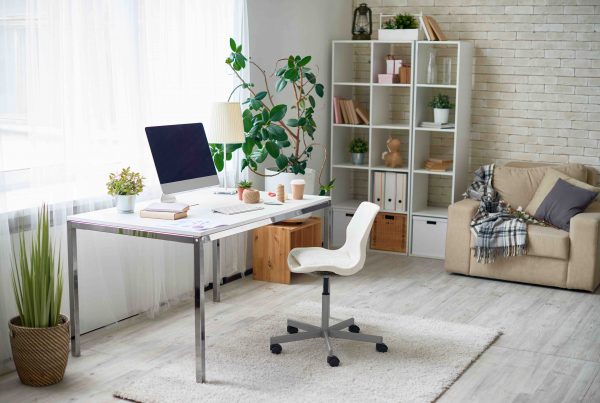Any well-planned renovations and refurbishments can add value to your home – and when it comes to flooring, there are many options. To help you make the right choice without over-capitalising, exploring different flooring options for your home can help save you money and stress.
Tailoring Flooring To Suit Your Lifestyle
The sort of lifestyle you enjoy plays a big part in the style of flooring that will suit your individual needs.
Whether you’ve got kids, pets or enjoy the quiet life alone at home, budget, maintenance and ease of installation are all important factors to consider. For property investors selecting floor coverings to go into a rental property, both budget and ongoing low-maintenance care are issues to think about carefully – but don’t be too frugal. Remember: your tenants are keen to make their rental property feel like a comfortable home they love living in and by providing them with comfortable floor coverings that look good and feel good too, you should choose floor coverings with style.
Timber
For allergy sufferers, timber flooring can be a positive choice – mainly because of how easy it is to keep clean and relatively dust-free. Aesthetically speaking, floorboards can also add a certain homey-warmth, with a range of different timbers and shades to suit your interior design style. When it comes to wooden flooring, you have a choice between solid or engineered timber.
It’s important to note that the effect of expansion and contraction is a potential issue with solid timber flooring, while the manufacturing of engineered timber minimises the impact. Engineered timber can also be more budget-friendly. To keep clean, both types of timber flooring can be easily dealt with by using an electrostatic mop, or even a vacuum – but do make sure you use a soft bristle attachment to avoid scratching.
Engineered floors can, in some cases, be laid directly over a concrete slab – perfect for apartments – but it is always important to think carefully about the type of timber you use, as some (pine, for example) dents easily. For a sturdier timber floor, look at hardwood Australian species, such as Greybox and Ironbark. Choosing sustainably-harvested timber is always recommended.
Carpet
There is something luxurious about feeling soft carpet underfoot – especially in bedroom zones, or formal living areas, where comfort and class is a priority.
For families seeking easy wear-and-tear, though, synthetic carpets can be a smarter choice – simply because of their durability and friendlier price.
Wool carpets are a much bigger investment but can be extremely hard-wearing. For ultimate luxury, splurge on a softer, thicker yarn but consider a cut-twist pile in high-traffic areas, for easier cleaning. It’s important to consider lighting when choosing the colour of your carpet.
What looks great in the store can look completely different at home, so it’s strongly recommended to obtain sample squares you can try out at home – both in the natural light of day and under night-time artificial lighting – to ensure the colour is perfect for your property.
Environmentally-Friendly Floor Coverings
In this age of increased awareness, choosing natural materials for your flooring is more important than ever. Choose from Sisal (harvested from cactus), jute (jute plant), paper (from conifer trees – with a short lifespan) or coir (coconut husk) but always consider the use the carpet will endure to weigh up whether this choice of material is right for your lifestyle, you budget – and your ethics.
Marmoleum – a linoleum that is biodegradable and made from recycled materials – is another option.
Concrete
It can be cost-effective but it’s definitely not for everyone. And, if you are choosing this hard-wearing material because you are looking for low-maintenance, make sure you understand how such a porous material can absorb stains – especially if you love your red wine.
Because it can be very cold underfoot, thinking about underfloor heating is something to consider at the construction stage – but it will add to your building budget considerably.
Using an experienced builder, who is happy to share testimonials or photos of past concrete flooring pours, is highly-recommended. With only one chance to get it right, the last thing you want to end up with is a less-than-perfect floor you hate looking at.
Tiles
Whether you choose porcelain, stone or ceramic, tiling needs to be done well. If you plan to tackle the job yourself, make sure you invest time and research in understanding the how-to, as well as investing in the right tools and equipment to get the job done right. If choosing a tiler to do it for you, ask to see testimonials from happy clients, or examine photos of past work done, to ensure their skills match your expectations.
Different tile materials suit different budgets and areas of your home so be clear on the look and feel you are keen to create and choose the size and look of your tiles accordingly. If you’re doing a major renovation or new build, thinking about ways to heat your home is something best done before tiling – especially if you are looking at under-floor heating.
Convection energy can cost a lot initially but the running costs can be less than other forms of heating so it is something worth researching to ensure you create a home you really love.
Vinyl & Laminate
The higher that quality of laminate flooring, the more pleasing the texture and look. Choosing vinyl flooring is one way of achieving a timber look, thanks to authentic designs that look like wood and have natural surface texture, to boot.
Because it is soft to walk on, it is ideal for the tender toes of young children and, with the added benefits of being waterproof and hard-wearing, it can be ideal for busy families looking for a low-maintenance flooring option.
By investing in a high-density underlay, the floor becomes even softer beneath your feet – as well as adding better insulation and noise-reduction.
To find out more about the mortgage you need to create your perfect home, talk to our home loan specialists at Lending Specialists today.










